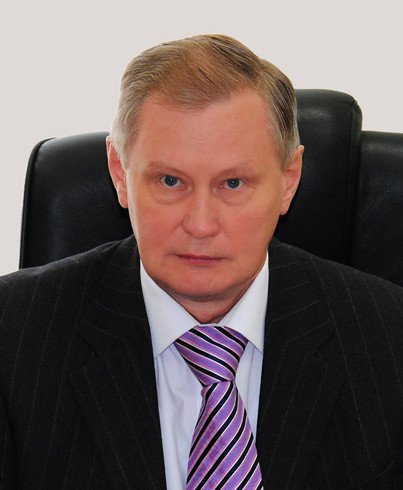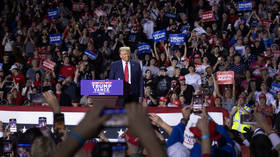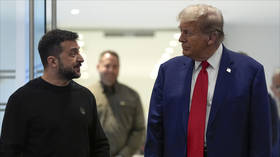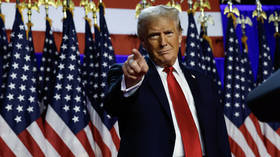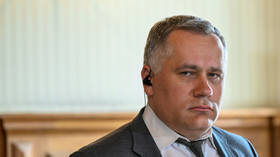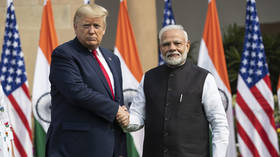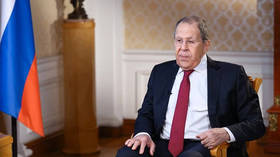Trump’s reported Ukraine peace plan is doomed to fail
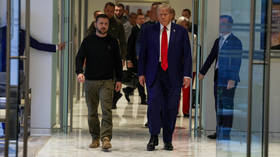
US President-elect Donald Trump and his advisers are apparently considering a new plan to end the conflict between Russia and Ukraine. This was reported by the Wall Street Journal last week.
The proposals allegedly include a freeze on military operations along the front line, the creation of a demilitarized zone, and a guarantee that Kiev won’t join NATO for at least 20 years. At the same time, the West would continue to supply Ukraine with weapons.
According to the newspaper, Trump’s promise to end the war by January’s Inauguration Day now puts him in the position of having to choose between competing proposals from advisers united by a common idea – a complete departure from current President Joe Biden’s plans to transfer arms and military equipment to Kiev for “as long as it takes.”
Throughout his election campaign, Trump sharply criticized Biden’s handling of Ukraine, warning that it brought closer the possibility of World War III, and that Kiev had cheated the US out of billions of dollars in free weapons.
Earlier this year, advisers Keith Kellogg and Fred Fleitz (who worked in Trump’s administration during his first term) presented a plan to reduce the supply of arms and military equipment to Ukraine until Kiev agreed to peace talks with Russia.
According to the Wall Street Journal’s sources, the new proposal to resolve the armed conflict includes several key points. In the most general terms, these boil down to the following:
They assume that hostilities will stop at the current milestones achieved by both sides of the conflict. This means freezing the front line and creating a demilitarized zone along it.
Russia will retain control over part of Ukraine’s claimed territory. For its part, Kiev must promise not to try to join NATO for the next two decades. In return, the US will continue to supply Ukraine with arms and military equipment. At the same time, according to the newspaper’s sources, Trump has not yet approved the final plan for resolving the conflict and intends to continue discussing it with his closest advisers.
What would the demilitarized zone look like?
The new settlement plan, details of which have been obtained by the WSJ, raises many questions. For a start, it is not even clear what the DMZ (demilitarized zone) would look like (at least its geometric dimensions should be specified) or whether it will extend, for example, to all the new regions of Russia (including the Crimean Peninsula).
According to the classic definition of a DMZ, military facilities on this territory must be removed, while the deployment of units and formations of armed forces, the fortification of the terrain, and the conduct of combat and operational training activities on it are prohibited. Most likely, Moscow and Kiev will stumble at the first point of the Trump plan and categorically reject the elimination of their military infrastructure.
Maintaining the security regime in the DMZ in this particular case will require, among other things, the presence of a contingent of peacekeepers (if only to separate the parties’ forces). Washington has already made it clear that the White House does not intend to send US military units to Ukraine for this purpose. Western European countries may then be involved instead. It is not yet possible to give clear answers to the many questions about the composition and size of any peacekeeping contingent, who would be in command and what the legal status of these forces might be.
Therefore, it is not difficult to use the term “demilitarized zone” but it seems to be problematic for the American side to describe how this will be implemented in practice and in detail.
What about legal status and NATO?
The next point in Trump’s plan is that “Russia will retain control over part of Ukrainian territory (sic).” It remains to be clarified which land, exactly, how its legal status could be described, and what is Kiev’s position on this issue (in other words, does Ukraine agree with this assumption in Trump’s plan?). Nothing is clear.
Next. According to the proposals, Ukraine will not try to join NATO for the next 20 years. At the very least, this thesis sounds pretty funny.
In other words, all responsibility in this matter is being shifted not onto Brussels and Washington, but onto Kiev. For example – we ask you not to apply to NATO. In short, “we’ll ask them not to lie, but they will lie.”
Again, why only 20 years? What is the justification for this particular timeframe? Where does it come from? Is it based on the title of Alexandre Dumas’ 1845 novel “Twenty Years After?”
And finally, in return, the US will continue to supply Ukraine with arms and military equipment. This is the most important point. Because if Washington stops supplying military equipment to Ukraine, the war will end tomorrow, without any demilitarized zones.
Is it possible to reach an agreement with Kiev?
The most important thing about Trump’s plan is that the authors don’t seem to have coordinated in any way with either Moscow or Kiev. And the Ukrainians will be the main problem, because the chief obstacle to the implementation of any peace initiatives is the absolutely insane and inadequate military-political leadership in Kiev (this can be judged with absolute certainty on the basis of all of their recent actions and steps, including the demands for Tomahawk missiles).
Just one example. Former Ukrainian President Pyotr Poroshenko, after the US elections, outlined five ‘red lines’: no compromise on Ukraine’s independence, no return to “Russia’s zone of influence”; Kiev will never give up territories that have come under Russian control; Ukraine will not agree to ‘limit the capacity of its armed forces’ because they are ‘the most reliable and effective guarantor of the survival of the Ukrainian state’; until the ‘full liberation’ of its territory, Ukraine cannot ‘compromise or agree to lift sanctions.’
In fact, Poroshenko’s statements quite accurately reflect the mood of the Ukrainian political class and fully characterize Kiev’s policy as a set of statements that are absolutely not based on the real capabilities of the state, its forces and means.
That is why the first point of any peace plan by Trump should sound something like this: “First of all, we must bring to power in Kiev a leadership capable of fulfilling agreements. Most importantly, reasonable and appropriate people. Only then will negotiations and discussion of any positions be possible.”
This article was first published by the online newspaper Gazeta.ru and was translated and edited by the RT team
